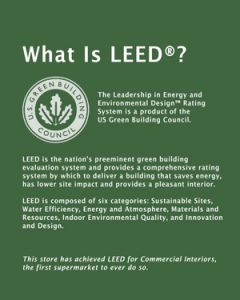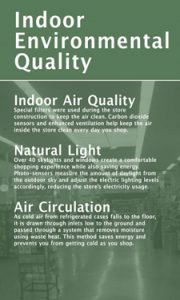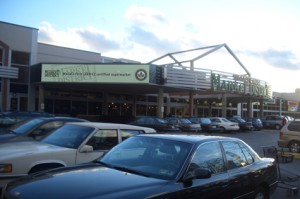Sustainability for Supermarkets
Returning from the Food Marketing Institute’s Energy and Store Development Conference in Atlanta, I pondered the unique role that supermarkets play in our daily lives. Trends unveiled at the conference include a blurring of the lines between restaurant and store, as well a move away from hydrocarbons towards natural refrigerants, such as CO2, that cause no ozone depletion. This would be a welcome transition, as Keilly Whitman, Manager of the EPA’s Greenchill program, noted that a typical store’s refrigerant leakage alone has more environmental impact than the store’s actual energy use. This means a lot when we consider that supermarkets are the most energy intensive ubiquitous building type in the US.
evolveEA gave two presentations: the first (above) is about the US Green Building Council’s new LEED for Retail program, focusing on its development and its applicability to supermarkets in particular. This presentation also chronicles our long relationship with Giant Eagle Inc. Through the course of certifying six stores over the last seven years, we have managed to continuously improve the baseline performance of all stores. By treating each store as a laboratory of sorts, Giant Eagle has kept many strategies introduced, such as daylighting, HVAC commissioning, energy modeling and healthy finishes, while leaving behind ideas that did not make sense to replicate.
Through the primary means of strategic goal setting, prototype evaluations, education plans and LEED management, evolveEA has been able to add value to several supermarket chains. See the presentation below for some examples of this work, as well as our credentials as LEED Faculty and FMI’s Sustainability Committee.
(below) After obtaining LEED Silver certification for Giant Eagle’s Shadyside Market District store in Pittsburgh, evolveEA created environmental signage to educate shoppers about the importance of sustainable design and how it affects their shopping and living experience.





